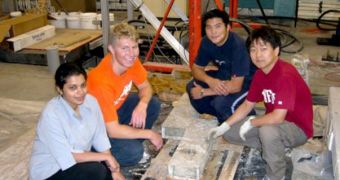Nearly 10 years after the September 11, 2001 attacks that brought down the World Trade Center, scientists are learning from the lessons the devastation had to offer. Stanford University researchers are currently developing technologies, designs and materials to prevent similar catastrophes.
Their goal is to reduce the amount of damage to human lives and property that characterized the 9/11 events. The two airliners that slammed into the WTC1 and WTC2 buildings caused horrendous damage upon impact, eventually burning their way through the core structures.
Both buildings collapsed within hours of the attack, although they had been designed to withstand such brutal onslaught. Now, researchers at Stanford are intent of not letting such a disaster happen again.
Some of the researchers with the team were on-site in Manhattan when the two planes struck, and witnessed the disaster first-hand. They became determined to develop methods of seeing to it that such attacks never take a similar toll in the future.
“I was riding the subway into work when they stopped the train and unloaded us. I came up above ground and saw smoke billowing up but I didn't know what had happened. It was a 20-minute walk to my office, and during that time the second plane struck,” says Jeremy Isenberg.
The expert, who is now a senior principal with the AECOM engineering consultancy firm, is a structural engineer who is collaborating with Stanford colleagues on this endeavor. For the past ten years or so, they have been working together towards their common goal.
“There has never been anything on the order of what happened to the Trade Center, and it focused attention on the potential vulnerabilities of tall buildings,” researcher Gregory Deierlein explains.
He holds an appointment as the John A. Blume professor of engineering and director of the Blume Earthquake Engineering Center at the university. “It's not like we can design buildings to resist airplane impacts,” he goes on to say.
Some of the measures that could be employed to reduce casualties are fairly simple, such as not allowing trucks near tall buildings. Providing multiple exit points and building shelters within the high-rises themselves could also prove to be effective means of drastically reducing casualties.
Another area of research now is preventing progressive collapse, a type of cascade effect that occurs when key structural elements in a building are intentionally targeted. Experts are using computer models to figure out where to install reinforcements in order to ensure building safety.

 14 DAY TRIAL //
14 DAY TRIAL //